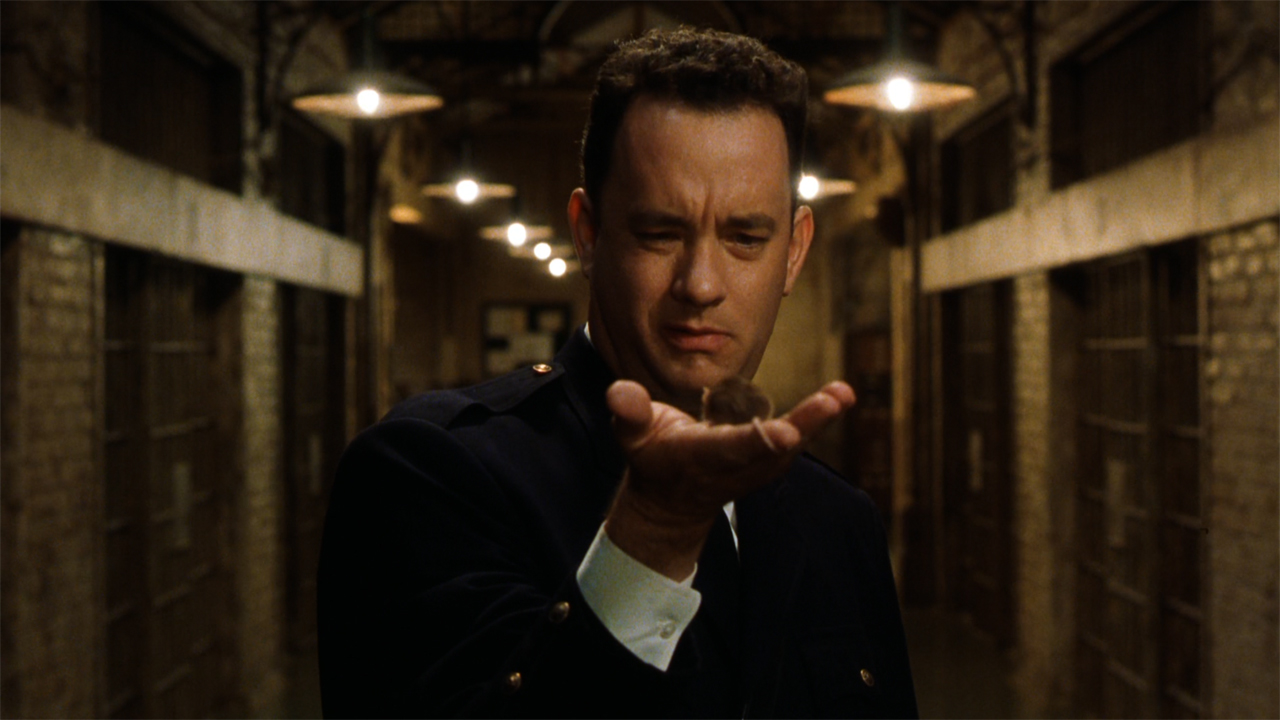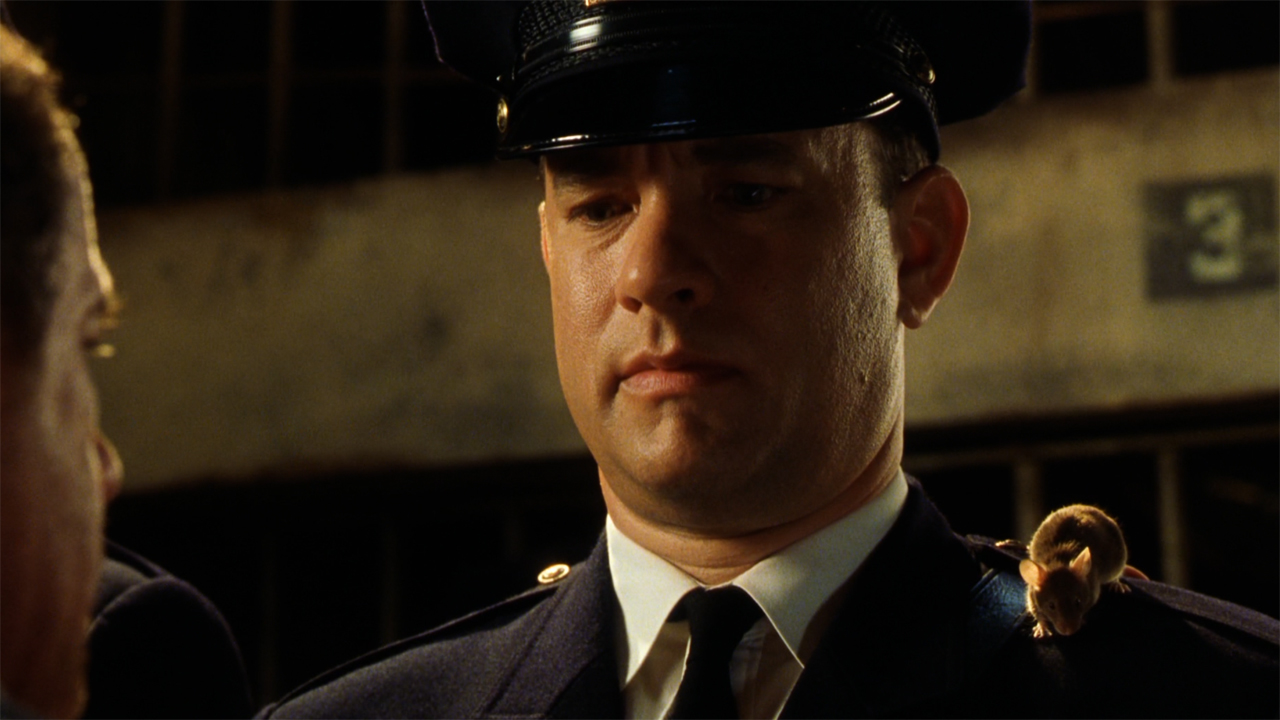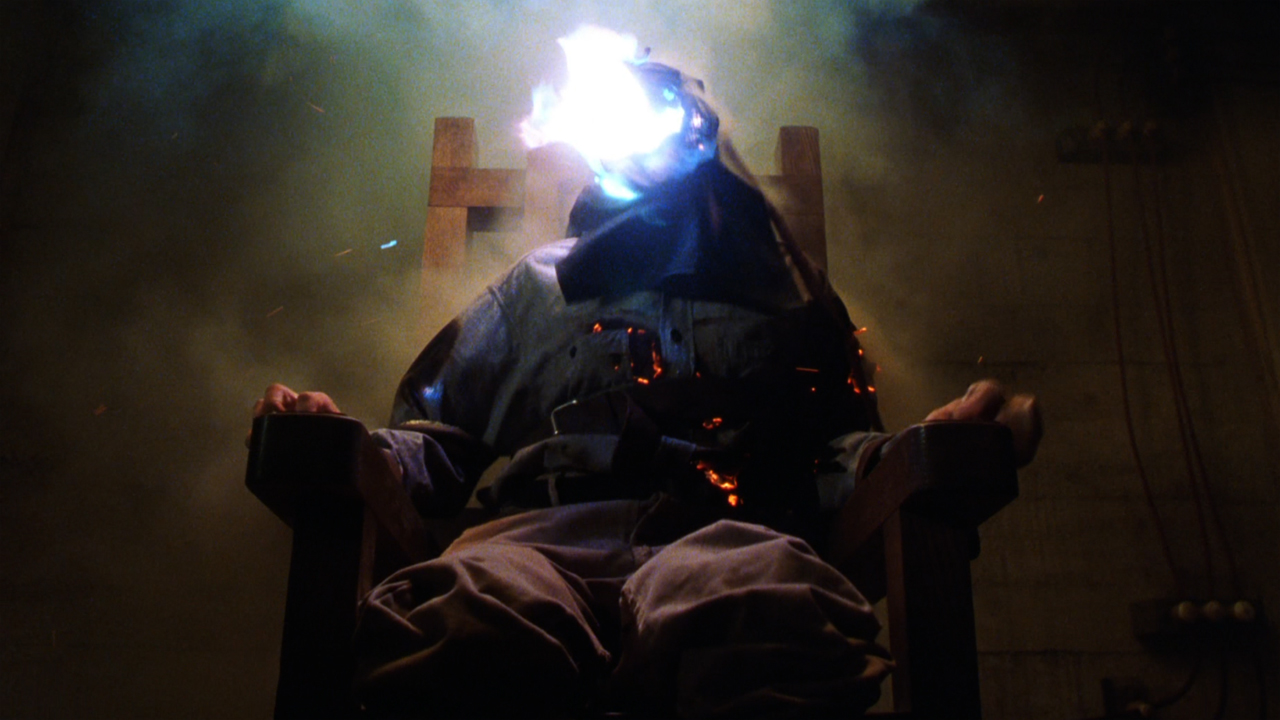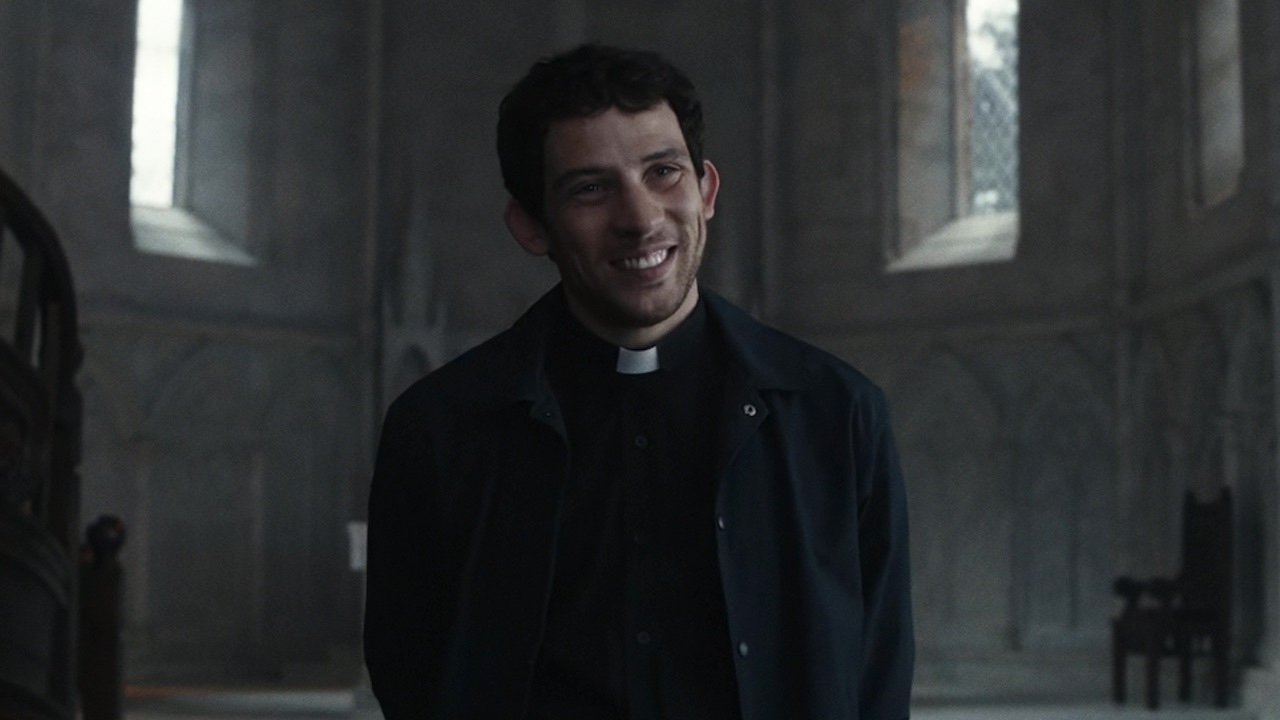Adapting Stephen King's The Green Mile: Rewalking Frank Darabont's 1999 Movie Miracle
Frank Darabont makes another miraculous Stephen King adaptation.

By late 1995, Frank Darabont’s The Shawshank Redemption was considered not just one of the best Stephen King adaptations of all time, but one of the most successful. The film was a flop in theaters, but it became a phenomenon on home video and earned a fast reputation as one of the most beloved movies ever made. Given this context, it’s unsurprising that King at that time found himself eager to work with Darabont again on another project – though the author notably pitched him on an idea he wasn’t sure the filmmaker would be interested in bringing to the big screen.
Having become friends as a result of their collaborations, Stephen King and Frank Darabont had regular phone conversations following the release of The Shawshank Redemption, and it was during one of these chats that King first revealed his plan for The Green Mile – which he was in the stages of planning as a serial novel released in six installments. The author says in his introduction to the published screenplay for the film that Darabont essentially requested first dibs to adapt the story after learning what it would be about, and King was surprised given that it would see him making another movie set in a prison. The writer/director’s response: “Well, you went back, didn’t you?” Hard logic to argue with.
Frank Darabont received a copy of the first Green Mile paperback (titled “The Two Dead Girls”) from Signet Books, and as soon as he did he knew he wanted to bring it to the big screen. He explains on the film’s director’s commentary track that he wanted to tell Stephen King about his intentions as quickly as possible – but King was busy in Estes Park, Colorado filming the miniseries adaptation of The Shining. Not feeling particularly patient, Darabont immediately took a flight to Denver so that he could meet face-to-face with his friend, and not only did he get approval to pursue the adaptation, but he also shaved his beard and put on a period tux to do a quick cameo as a ghost in the on-going production.
The right choices were made by all involved, as The Green Mile is a phenomenal and beautiful cinematic experience, and one that (unlike Shawshank) was recognized for its greatness instantly – earning $286.8 million worldwide at the box office and earning four Academy Award nominations (one of which it definitely should have won – but we'll get to that in a bit). It’s funny, dramatic, dark, light, uplifting, and depressing, and an exciting subject for this week’s Adapting Stephen King.

What The Green Mile Is About
In his introduction to The Green Mile, dated October 27, 1995, Stephen King recounts that his inspiration to write the book, technically speaking, came from a realtor he never met. Said realtor rented a house on Rhode Island to a friend/business associate of King’s, Ralph Vicinanza, and during their sell they remarked that the property looked like something out of a Charles Dickens story. This description stuck in Vicinanza’s mind, and it became a subject of discussion later with his first houseguest, British publisher Malcolm Edwards.
During his stay with Ralph Vicinanza, Edwards brought up the fact that a number of Dickens’ books weren’t sold as a single volume, but instead as installments – and this then led the two men to discuss the possibility of a popular contemporary author attempting something similar. Eventually this conversation faded from Vicinanza’s memory, but he recalled it when he was having a discussion with King in late 1995 about a number of potential opportunities. The author said no to an “interview in the Japanese Playboy" and an “all-expenses-paid tour of the Baltic Republics,” but the serial novel idea intrigued him.
What’s more, Stephen King had a backburner idea that he felt the medium could make work – one structured around a personal fascination he had with death row and the electric chair a.k.a. Old Sparky. He wondered about both the experience of walking to the chair and what it would be like to work as a guard, and after years of pondering he explored his curiosity through The Green Mile: a book about a good universe that is poisoned by the people who live in it.
Your Daily Blend of Entertainment News
The book is the story of Paul Edgecombe, and it is set in both the present and the past – specifically the year 1932. In the present, Paul is an old man living at a retirement community, and he spends his days sneaking away from the facility and writing a book about his experiences working as a supervising officer on E Block at Louisiana's Cold Mountain Penitentiary, focusing on his time spent with a living miracle named John Coffey.
Though John has been found guilty of a heinous crime, namely the rape and murder of a pair of nine-year-old twin girls, Paul discovers that there is far more to the gentle giant than his criminal record. While the protagonist regularly encounters some of the worst people humanity has to offer – such as his sociopathic colleague Percy Wetmore and murderous criminals like William “Wild Bill” Wharton – he discovers that the simple, 6’8” muscular Black man caged in one of his cells has a remarkable gift that allows him to heal the sick and the dying.

How Frank Darabont’s The Green Mile Differs From Stephen King’s Novel
Despite the fact that Frank Darabont was directing his first feature film, executives at Castle Rock felt comfortable giving the filmmaker final cut in the making of The Shawshank Redemption. While the end result of this decision was a movie with an expansive 143 minute runtime, its ultimate success led the studio to let Darabont make The Green Mile as he saw fit… hence the adaptation’s 189 minute runtime.
That’s a lot of movie, but it’s appropriate given that it allows it to be marvelously faithful to the source material that inspired it, including just about every plot point and character – albeit with some exception.
The sequences with Paul Edgecombe as an old man (Dabbs Greer) operate as bookends in the film, but it’s a much more substantial part of the narrative in Stephen King’s serial novel. In addition to cutting out the fact that Paul is writing a memoir about his time with John Coffey (Michael Clarke Duncan), the adaptation also doesn’t feature a cat-and-mouse game that the protagonist plays with Brad Dolan, a slimy and dislikable orderly at the retirement facility who specifically reminds the former prison guard of Percy Wetmore (Doug Hutchinson).
Because the book writing is taken out, the film substitutes a different avenue into the flashbacks of the past, which is Paul seeing the movie Top Hat on television and feeling compelled to tell his story to fellow resident Elaine Connelly (Eve Brent). Consequently, the scene at the end of The Green Mile when young Paul (Tom Hanks) takes John to watch Top Hat on the big screen is an invention of Frank Darabont’s as well.
The vast majority of the events set in 1932 play out in the film adaptation almost exactly as they do in the book, though there is one missing character, and one missing narrative thread. The character cut out is Arthur Flanders, nicknamed “The President,” who is a prisoner on E Block for a short spell, but is transferred back to general population when his sentence is commuted. Lifting him out has no actual impact on the story, so it’s easy to see why Frank Darabont cut him.
The narrative thread removed involves Paul personally investigating the murder of the Detterick twins – the crime for which John Coffey was found guilty. It’s through this probing he discovers that it was “Wild Bill” Wharton (Sam Rockwell) who committed the atrocity, and that John came upon the girls after they were dead and tried to heal them.
The film version of The Green Mile circumvents this by having John transfer his knowledge of events to Paul via a psychic touch – which builds on the fact that John learns the truth himself when Wild Bill grabs his arm as he and the guards surreptitiously sneak out to the home of Warden Hal Moores (James Cromwell) and his wife Melinda (Patricia Clarkson).

Is It Worthy Of The King?
There are obviously many parallels to be made between The Shawshank Redemption and The Green Mile: both are written and directed by Frank Darabont and are based on Stephen King stories that take place primarily inside prison walls and are set in early/mid-20th century. Every time I watch them both, however, I am struck by how they differ as emotional experiences. The 1994 film is a testament to the fortitude of the human spirit and the power of hope, and its fraternal twin is a story that confronts a pervasive darkness in our society that competently works to snuff out promising light.
The world has a habit of crushing the influential figures in our history who have promoted peace and equality – from Martin Luther King Jr., to Medgar Evers, to Mahatma Gandhi – and The Green Mile is a powerful reflection on that horrible truth with a dose of the supernatural. It’s a gut-punch commentary as originally written by Stephen King, and perfectly translated in Frank Darabont’s film.
There’s a strong argument to be made that The Green Mile sports the greatest ensemble that has ever been put together for a Stephen King adaptation, with every actor perfectly encapsulating their respective roles. It’s among the five titles one points to when one wants to illustrate why Tom Hanks is one of the most consummate leading men ever to grace the silver screen, but the reality is that he is also constantly upstaged by the remarkable, scene-stealing supporting cast.
It’s a testament to the effectiveness of Doug Hutchinson’s performance that I want to punch the screen every time Percy appears, and Michael Jeter is spectacular as the mouse-loving Eduard Delacroix (who is at the center of one of the most horrific death scenes in the King canon). But the true awe-inspiring turn is the one from Michael Clarke Duncan as John Coffey.
Frank Darabont notes on the Green Mile director’s commentary that Duncan was recommended to him by Bruce Willis, who had just worked with the actor on Michael Bay’s Armageddon. His performing experience was limited, but he ended up winning the part of John Coffey after Darabont hooked him up with a coach following his first audition – and what he’s able to do with the role is at times overwhelming. With respect to Michael Caine’s performance in Lasse Hallström’s The Cider House Rules, Duncan should have won the Best Supporting Actor trophy at the 2000 Academy Awards, as his work is staggering and unforgettable.
One last similarity I’ll point out between The Shawshank Redemption and The Green Mile is that they are perfect adaptations of the respective stories on which they are based, and Hollywood need not try to ever question or second guess that reputation. The situation isn’t quite the same with Frank Darabont’s third King adaptation, 2007’s The Mist, but I’ll save that commentary for my Adapting Stephen King column scheduled for September 7.

How To Watch Frank Darabont’s The Green Mile
If you presently have three hours available in your schedule and want to watch The Green Mile right now, it would take just a few clicks of your mouse/a few taps on your remote. It’s available for free (with ads) on Tubi, though you can also rent or purchase it digitally from all major retailers, including Google, Amazon, and Vudu. If you’re into physical media and are presently trying to build the Ultimate Stephen King collection, however, you should exhibit some patience. While the movie is now available on Blu-ray and DVD, a brand new 4K edition will be hitting store shelves on February 22, and it is now available for pre-order.
Coming up next week, we are moving into the 21st century with a look at another one of the more dramatic-yet-supernatural movies in the canon of Stephen King adaptations: Scott Hicks’ Hearts In Atlantis. Look for the piece on the site here in the CinemaBlend movie section next Wednesday, and for now click through the banners below to discover all of the previous installments of this chronological column.







Eric Eisenberg is the Assistant Managing Editor at CinemaBlend. After graduating Boston University and earning a bachelor’s degree in journalism, he took a part-time job as a staff writer for CinemaBlend, and after six months was offered the opportunity to move to Los Angeles and take on a newly created West Coast Editor position. Over a decade later, he's continuing to advance his interests and expertise. In addition to conducting filmmaker interviews and contributing to the news and feature content of the site, Eric also oversees the Movie Reviews section, writes the the weekend box office report (published Sundays), and is the site's resident Stephen King expert. He has two King-related columns.
